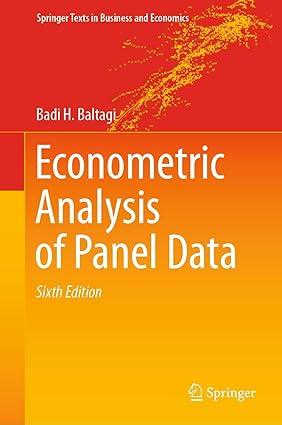To Trade or Not to Trade. This is based on the empirical application to bilateral trade flows
Question:
To Trade or Not to Trade. This is based on the empirical application to bilateral trade flows between countries using data from Helpman, Melitz and Rubinstein (2008). The data set includes trade flows for 158 countries over the period from 1970 to 1997 . This is used to fit probit and logit fe models by CruzGonzalez, Fernandez-Val and Weidner (2017) for the probability of positive trade between country pairs in 1986. The data structure is a pseudo-panel where the two dimensions index countries, with id as importers and jd as exporters. The dependent variable trade is an indicator equal to one if country i imports from country \(\mathrm{j}\), and equal to zero otherwise. The specification is a gravity trade equation with explanatory variables including \(\log\) (distance), border, legal origin, language, colony, currency, federal trade agreements, islands, religion, landlock. These variables are defined in Helpman, et al. (2008) and CruzGonzalez, Fernandez-Val and Weidner (2017). However, the latter add lagged bilateral trade to account for possible state dependence in trade decisions. The data set is available as trade in Stata when you install probitfe and logitfe.
(a) Replicate Table 1 of Cruz-Gonzalez, Fernandez-Val and Weidner (2017) using felogit.
(b) Replicate Table 2 of Cruz-Gonzalez, Fernandez-Val and Weidner (2017) using feprobit.
Step by Step Answer:






